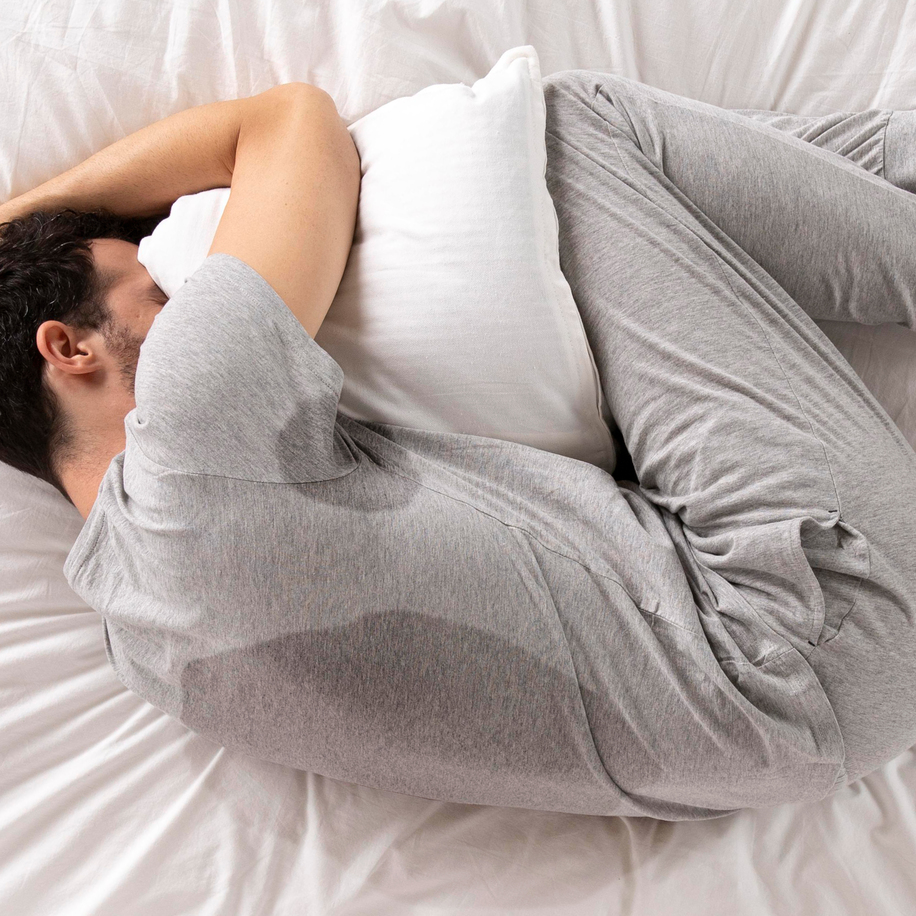How to Keep a Healthy
Home Free from Germs
Table of Contents:
Urbanization has caused overcrowded residential areas and packed public transport system resulting in people cramped into limited spaces, sharing common areas which increases the risk of disease transmission through touch and airborne means.
It’s nearly impossible to avoid germs outside; they are in the air, water, soil and common spaces. We also bring back the germs unconsciously on our skins, hands, through our wandering pets and even our indoor plants.
4 types of germs to look out for
It’s nearly impossible to avoid germs even when at home – they’re in the air, water and soil; they’re also on our skins, our pets, and even our indoor plants.
While some microbes are harmless, others can cause diseases. It’s therefore imperative that we learn to avoid the latter by first understanding what they are.1
There are four types of germs:
1. Bacteria
These miniscule creatures come in many shapes; some are important for good health – the kind that promotes healthy gut functions like probiotics – while some can cause serious diseases.
The types of illnesses bad bacteria can cause include pneumonia, meningitis, and food poisoning.2
2. Viruses
Viruses are not complete cells – they require a living host in order to survive; so they spread from one living organism to the next as a means of multiplication.
The ever-present COVID-19 is an example of viral infection caused by viruses; meanwhile sexually transmitted diseases, chickenpox, and even the common cold are more common types of infections.3
3. Fungi
At home, you’ll likely come across fungus growth such as Aspergillus, Penicillium, and Stachybotrys in warm, damp places.4
These fungi contain mycotoxins that are known to cause acute poisoning, immune deficiencies, and cancer.5
4. Protozoa
Like viruses, these single-cell organisms look for animals or humans as hosts.
Some protozoa are parasitic and can cause illnesses such as malaria, giardia, and toxoplasmosis.6
How do germs make us sick?

Because germs are everywhere, simply coming into contact with or being within the vicinity of objects or organisms teeming with germs can cause infection.
They can enter our bodies through contaminated water or food, or even vectors like mosquitoes, fleas, and rats.7
From there, infections occur; should the cells in our bodies get damaged as a result, this is when our condition is classified as a disease.
The viruses that are now present in our bodies attack our cells and challenge our immune systems.
As a response, our bodies develop a fever because heat inactivates viruses, while chemicals called interferon are secreted to block viruses from reproducing.
On top of that, our bodies may also direct antibodies to specifically target the source of infection.
What are the germiest areas at home?

If you’re getting sick very often, especially when you spend prolonged periods at home, there’s a chance that your house may be unclean and filled with germs.
One of the best ways to deal with bacteria, virus, fungi, and protozoa is to eliminate these microbes at the source.
Some of the places in your home teeming with germs include:
1. Kitchen
Look sternly at the unassuming dish sponge and kitchen rag. Essential cleaning tools in any kitchen, these items are prone to being contaminated with diarrhoea-inducing E. coli and faecal matter.
Meanwhile, the stove knob is on the top ten list of dirtiest items at home, according to the National Sanitation Foundation (NSF).8
If you enjoy your daily cuppa, make sure to check the coffee reservoir in your home brewing machines; they present a dark and damp environment best suited for mould growth.
2. Bathroom
This one goes without saying: the only place at home where you relieve yourself finds its spot on the list of germiest places.
Bathrooms tend to be wet and humid, and these conditions are perfect for mould growth.
On top of that, in the same NSF study referenced above, toothbrush holders, of all things, are notorious for containing germs.
Up to 27% of toothbrush holders tested in a 2011 study showed the presence of salmonella and E. coli9.
Also in the same study, faucet handles were found to contain yeast and mould too, despite mostly being made of metal.
3. Pets
With pets, you’re not looking at one specific location for germs; you’re thinking about basically your entire house!
Pets leave excrement, which, when left uncleaned, can become breeding grounds for bacteria as well.
On top of that, the toys that your fur kids play with are also covered with saliva and dust. This means germs, staph, and yeast.10
4. Home offices
According to a report by Reuters, keyboards can be dirtier than a toilet. The study that the article quoted showed that your typical keyboard, if not cleaned frequently, can have 150 times more bacteria than what can be considered safe.11
Making matters worse, The Daily Mail reports that the average computer desk has 21,000 germs per square inch, which far exceeds the 3,295 germs found on keyboards.
What causes an unhealthy home?
A home is a safe space where you let loose and relax, but complacency and bad habits can turn a pristine abode into a festering pool of germs.
1. Bad hygiene
Although habits are hard to break, you may want to start paying more attention to your own habits if you find your surroundings unclean.
Take a trash can that’s overflowing with waste for example – a bag filled with decaying meat from your last meal, used tissues, cans containing water, and more of the sort allows bacteria to thrive and attract flies.
Through contact with these contaminants, you’re likely to suffer from typhoid fever, food poisoning, gastroenteritis and more nasty illnesses you don’t want to experience.12
2. External factors
Over 50% of people around the world live in busy urban areas bustling with cars and people – if you live near a busy street packed with traffic, you’ll likely breathe in carbon monoxide, which is recognised as one of the six major air pollutants.
High levels of exposure can render you unconscious and even cause death.
On top of that, when you ride the jam-packed trains to work or stop by a mega-sized store for groceries, you are at risk of being contaminated with germs that you will eventually bring into your home.13
Important habits to keep your home germ-free

As much as we understand how dangerous bacteria and germs can be to our health, it’s nearly impossible to not come into contact with these microorganisms.
However, if there’s anything we learned about living in a pandemic, it's that being a little bit cleaner and more cautious can go a long way toward keeping yourself healthy.
At home, take up the habit of cleaning regularly by disinfecting areas that are prone to contamination, such as the bathroom, kitchen, and bedroom. Germs can live on the surface for multiple days at a time, so never take dirty countertops lightly.
When returning home from work, leave your shoes outside and disinfect thoroughly before stepping into your living room.
While obvious enough, cleaning out the garbage regularly should not be an afterthought; make an effort to toss out the trash every night and the next day before whenever you get the chance to avoid bacteria buildup.
nanoe™ X can mitigate your germ concerns

Equipped in air-conditioners, nanoe™ X is a technology that generates atomised water particles that contain hydroxyl radicals.
These nano-sized particles can inhibit germ activity by attaching itself to the microbes and denaturing its proteins.
Based on tests, nanoe™ X aids in the reduction of more than 99% of airborne bacteria and viruses over time – without the technology, harmful microorganisms were still present after an eight-hour observation period.15
On top of that, a space with nanoe™ X also attained effectiveness of more than 99% inhibition against adhered bacteria compared to microbes that have a 100% survival rate in a room that was not filled with hydroxyl radicals.
Have peace of mind when you equip your home with nanoe™ X, knowing you live in a nearly germ-free space.
To learn more about the technology, visit our website here.
1 https://my.clevelandclinic.org/health/articles/24495-germs
2 https://www.healthline.com/health/cold-flu/good-bad-germs
3 https://my.clevelandclinic.org/health/diseases/24473-viral-infection
4 https://indianexpress.com/article/lifestyle/health/house-fungus-impact-on-health-prevention-treatment-symptoms-7458466/
5 https://www.who.int/news-room/fact-sheets/detail/mycotoxins
6 https://www.verywellhealth.com/definition-of-protozoa-1958837
7 https://www.ncbi.nlm.nih.gov/books/NBK209710/
8 https://www.nsf.org/blog/consumer/clean-germiest-home-items
9 https://d2evkimvhatqav.cloudfront.net/documents/2011_NSF_Household_Germ_Study_exec-summary.pdf
10 https://www.healthline.com/health/germy-places#pets
11 https://www.abc.net.au/science/articles/2004/07/01/1143577.htm
12 https://www.ecubelabs.com/overflowing-garbage-bins-5-impacts-on-health-and-environment-and-how-to-prevent/
13 https://www.healthline.com/health/mental-health/living-in-a-city
14 https://www.businessinsider.com/coronavirus-lifespan-on-surfaces-graphic-2020-3
15 https://www.panasonic.com/global/hvac/nanoe/all/verification/evidence.html
Click here to contact us about products with nanoe™ X technology









